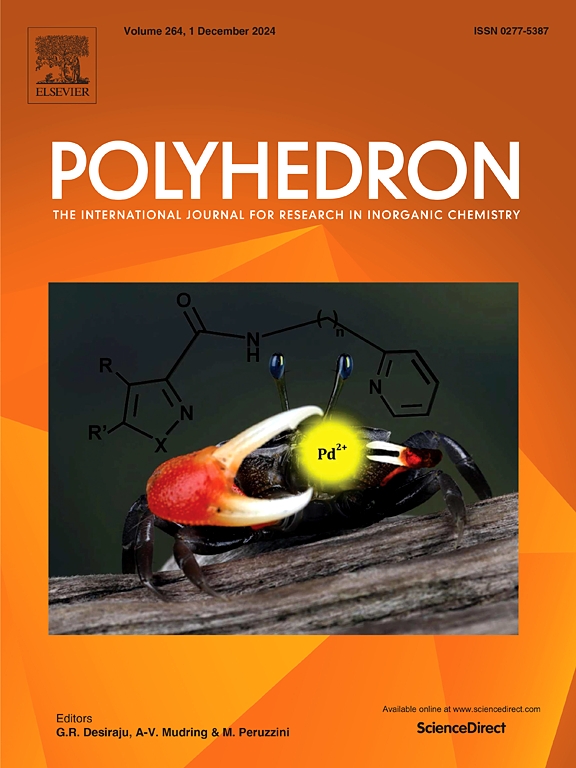New intercalation composite material for photocatalysis
IF 2.4
3区 化学
Q2 CHEMISTRY, INORGANIC & NUCLEAR
引用次数: 0
Abstract
The effective contact between the components in heterojunction is a key factor for improving the photocatalytic activity of photocatalysts, while the morphology and state of components also have a significant impact on their photocatalysis process. In this study, compared with the current studies (only modifying TiO2 onto the surface of g-C3N4), new composites (g-C3N4/TiO2-HSs) with larger specific surface area and more stable structure were designed and prepared by embedding TiO2 hollow spheres (TiO2-HSs) into carbon nitride (g-C3N4) interlayers. g-C3N4/TiO2-HSs exhibited higher degradation efficiency for RB, compared with the g-C3N4/TiO2 rods and g-C3N4/TiO2 sheets, which were the same with g-C3N4/TiO2-HSs except substitution of TiO2-HSs with TiO2 rods and sheets. The conclusion of the free radical trapping experiment proved that the main reaction substances for the degradation of RB are h+ and.O2– radicals, and photocatalytic reaction mechanism was explored. This work provides some new ideas for preparing more complex materials in future research.

新型光催化插层复合材料
异质结中组分之间的有效接触是提高光催化剂光催化活性的关键因素,而组分的形态和状态对其光催化过程也有重要影响。本研究通过将TiO2空心球(TiO2- hss)嵌入氮化碳(g-C3N4)夹层中,设计并制备了比表面积更大、结构更稳定的新型复合材料(g-C3N4/TiO2- hss)。g-C3N4/TiO2- hs对RB的降解效率高于g-C3N4/TiO2棒和g-C3N4/TiO2片,与g-C3N4/TiO2- hs相比,g-C3N4/TiO2- hs的降解效率与g-C3N4/TiO2- hs相同,只是用TiO2棒和片代替了TiO2- hs。自由基捕获实验的结论证明了RB降解的主要反应物质是h+和。探讨了氧自由基和光催化反应机理。本工作为今后制备更复杂的材料提供了新的思路。
本文章由计算机程序翻译,如有差异,请以英文原文为准。
求助全文
约1分钟内获得全文
求助全文
来源期刊

Polyhedron
化学-晶体学
CiteScore
4.90
自引率
7.70%
发文量
515
审稿时长
2 months
期刊介绍:
Polyhedron publishes original, fundamental, experimental and theoretical work of the highest quality in all the major areas of inorganic chemistry. This includes synthetic chemistry, coordination chemistry, organometallic chemistry, bioinorganic chemistry, and solid-state and materials chemistry.
Papers should be significant pieces of work, and all new compounds must be appropriately characterized. The inclusion of single-crystal X-ray structural data is strongly encouraged, but papers reporting only the X-ray structure determination of a single compound will usually not be considered. Papers on solid-state or materials chemistry will be expected to have a significant molecular chemistry component (such as the synthesis and characterization of the molecular precursors and/or a systematic study of the use of different precursors or reaction conditions) or demonstrate a cutting-edge application (for example inorganic materials for energy applications). Papers dealing only with stability constants are not considered.
 求助内容:
求助内容: 应助结果提醒方式:
应助结果提醒方式:


